It’s been 14 months since the City of Portland took the keys to 82nd Avenue away from the Oregon Department of Transportation. This jurisdictional transfer has been hailed by community leaders and advocates as a way to transform the former state highway into a more pleasant main street with better transit service and more safe places to walk and bike.
With $185 million already committed to the plan, PBOT and their partners at Metro and TriMet have begun to set the foundation of what 82nd will look like when all the dust settles in 2030. As with any project like this, a big part of the process is public outreach. And Tuesday night at McDaniel High School project leaders hosted the first of three district workshops. It was the north district workshop, with similar events for the central and south districts coming next month.
Curious about where things stand with this project, I rolled over to check it out.
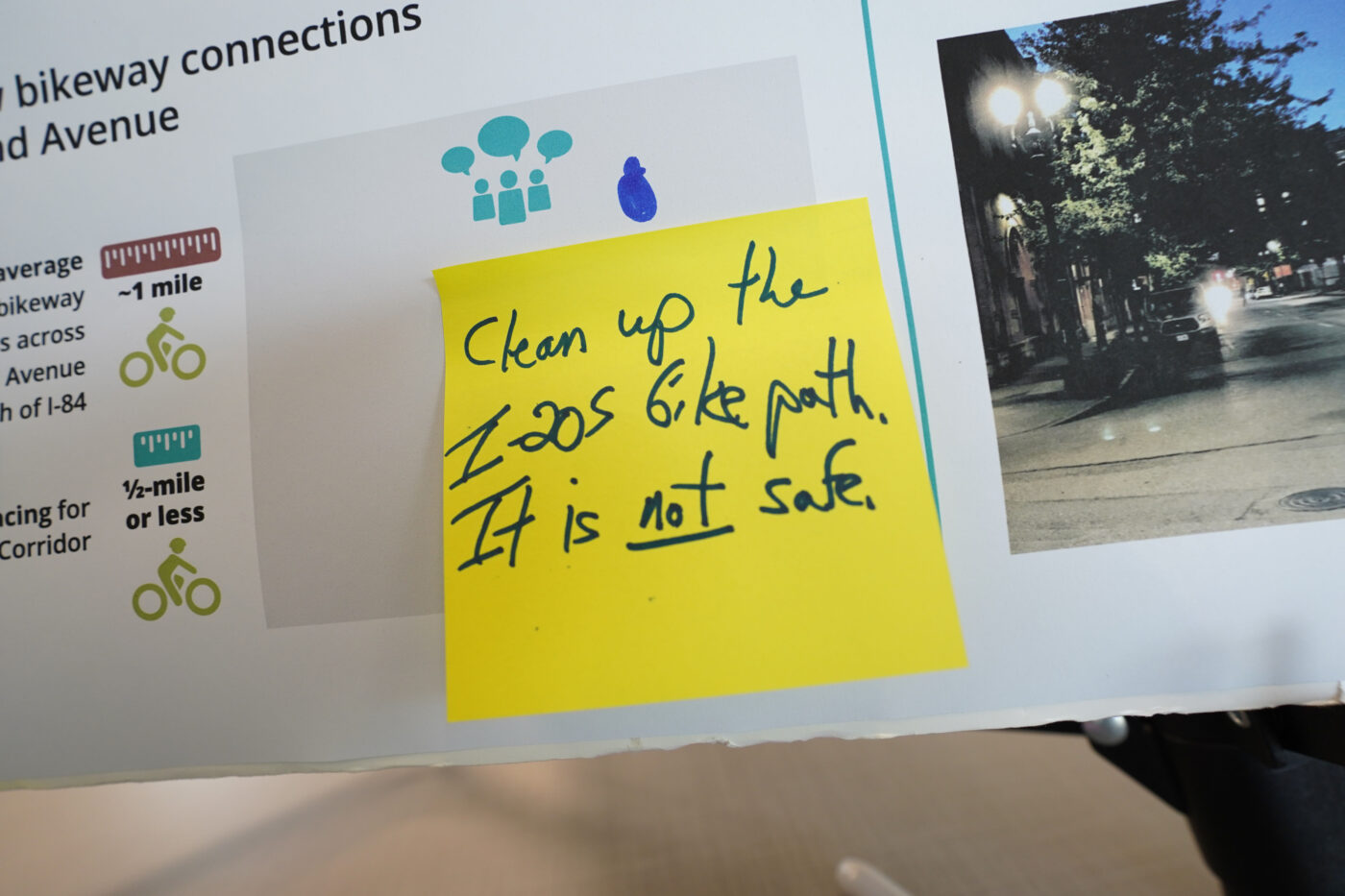
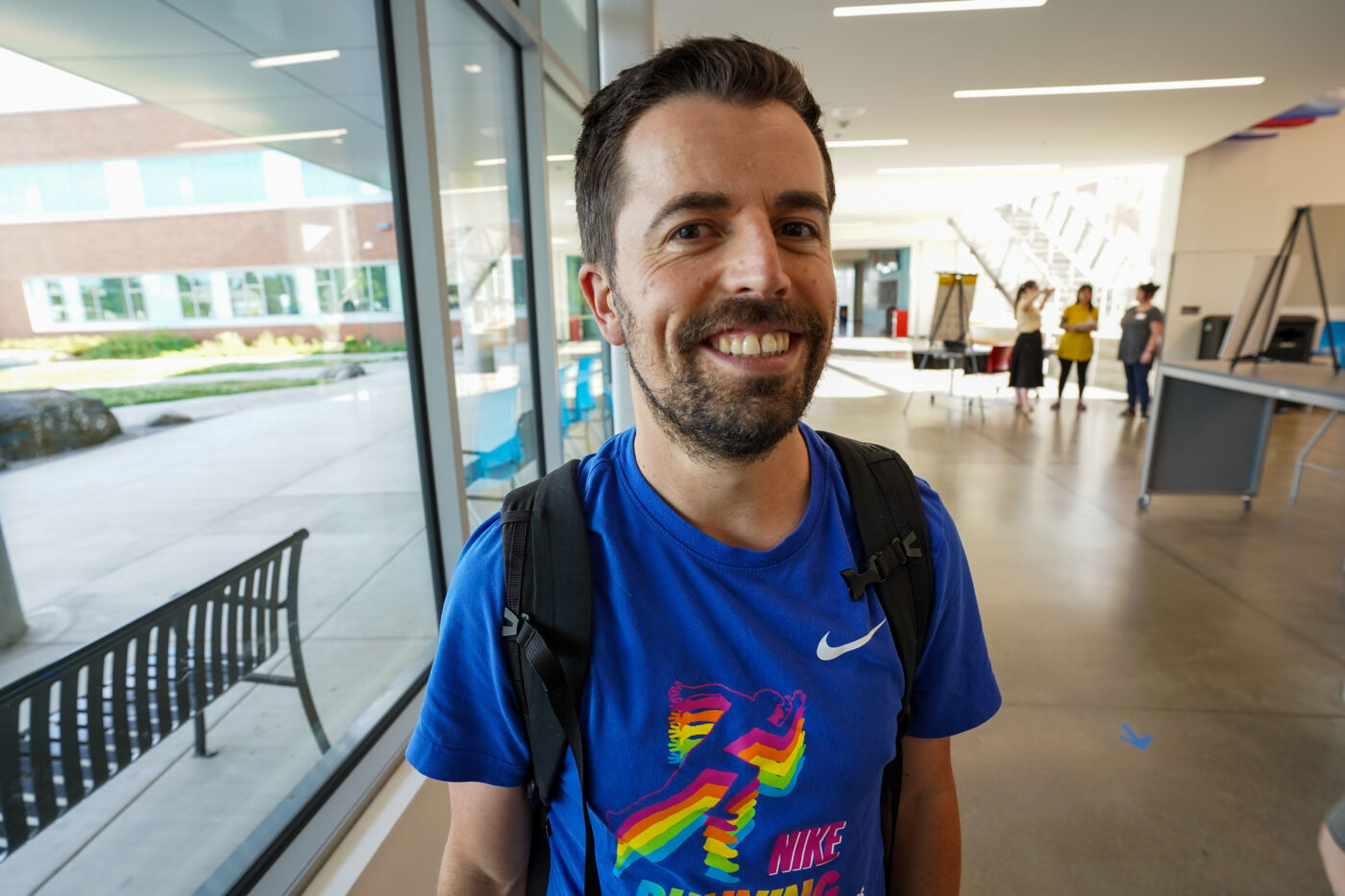
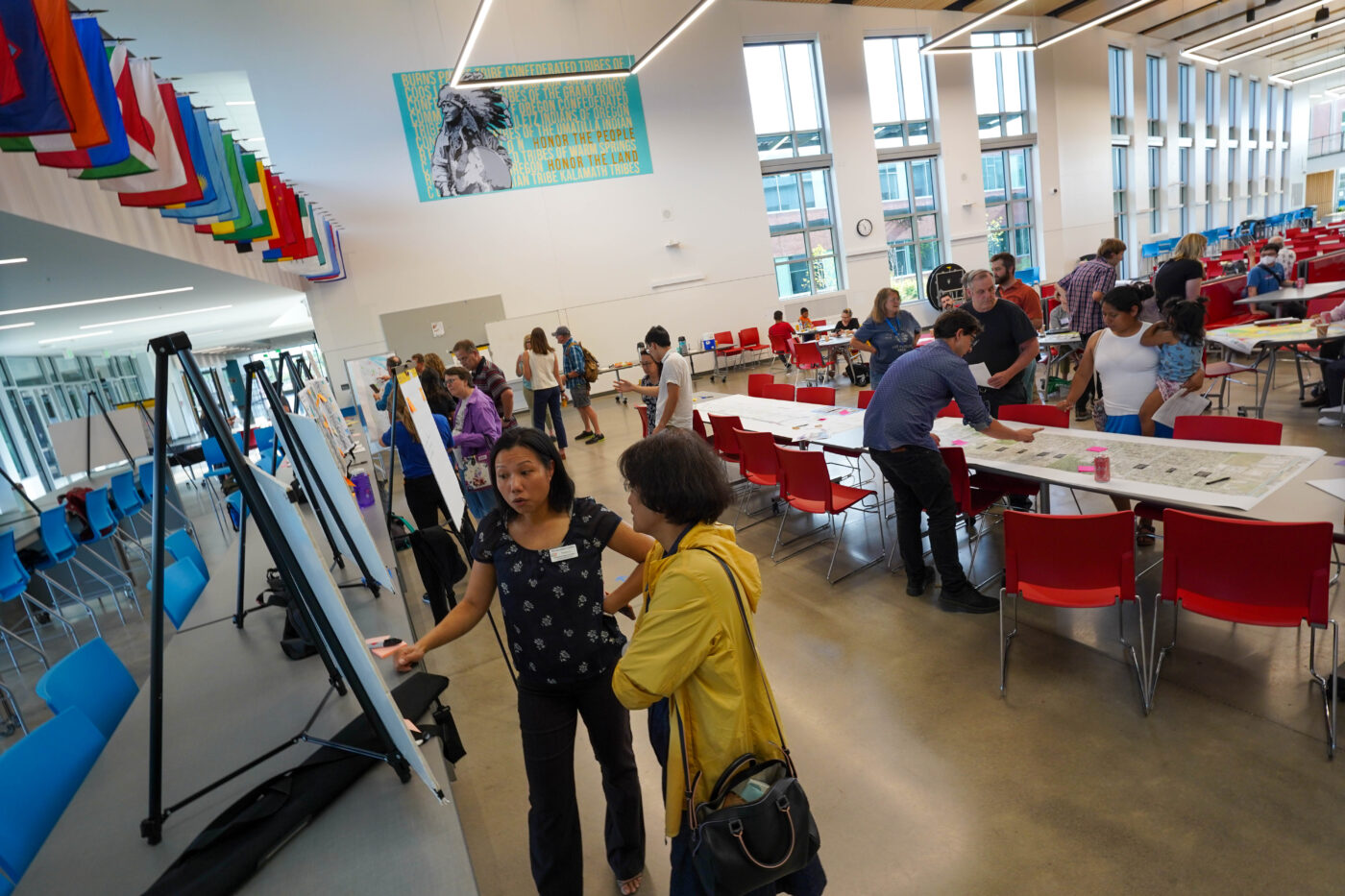
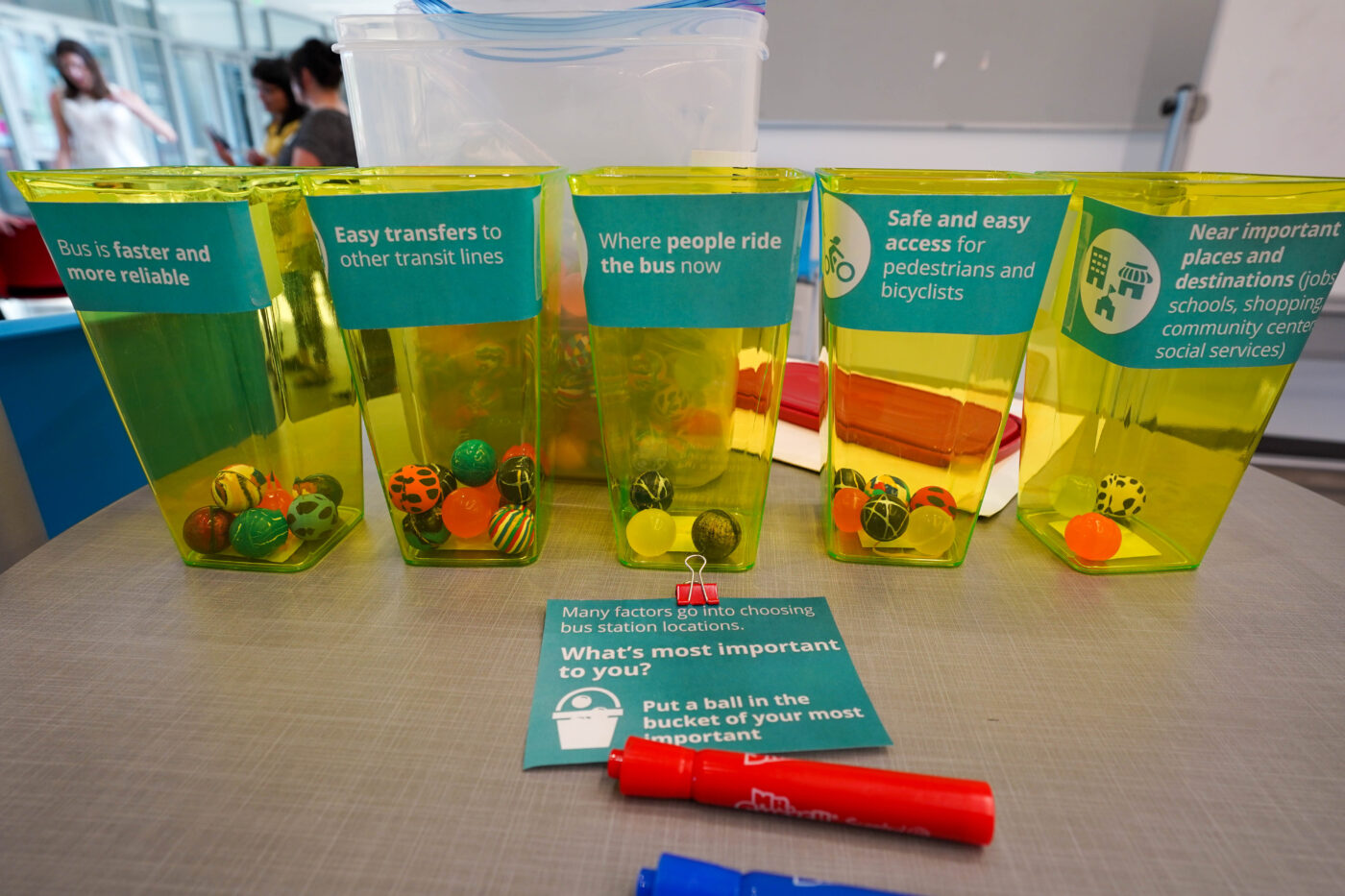
It was a relatively good turnout for a weeknight transportation project, but I bet over half the crowd were agency staff, professional advocates and/or consultants who were paid to be there. There was a loop of posterboards where folks could see project details and lots of Metro, PBOT, and TriMet staff available to answer questions. Folks were chatting at tables and filling out post-it notes with their comments. One of the first people I ran into was Micah Meskel. Turns out he’s the Interim Urban Conservation Director for Portland Audubon, so it was no surprise our chat centered around the role of trees in the future design of 82nd.
Asked what his focus for this project is, Meskel said, “Trees are a top priority, especially using them to create safer pedestrian access and traffic calming.”
It’s not just conservationists like Meskel who are thinking about trees. Given their ability to reduce the heat island effect (and myriad other benefits) they are one of the project’s top priorities and they appear in medians in the earliest conceptual designs.
How would Meskel balance the preservation of trees with a safer street design? “We know that existing trees are so much better at suppressing carbon, creating shade, and all that stuff. And yes, sometimes they come in conflict with the best design. And so it’s sort of a case-by-case basis,” he replied. “I start in the position of ‘let’s see how we can work around the tree,’ and so whether that’s realignment of the sidewalk or whether that’s thinking of loosening the standards at one pinch-point spot.”
Along with street trees, the project laid out other priorities last night: a vibrant streetscape, safety, and bicycling.
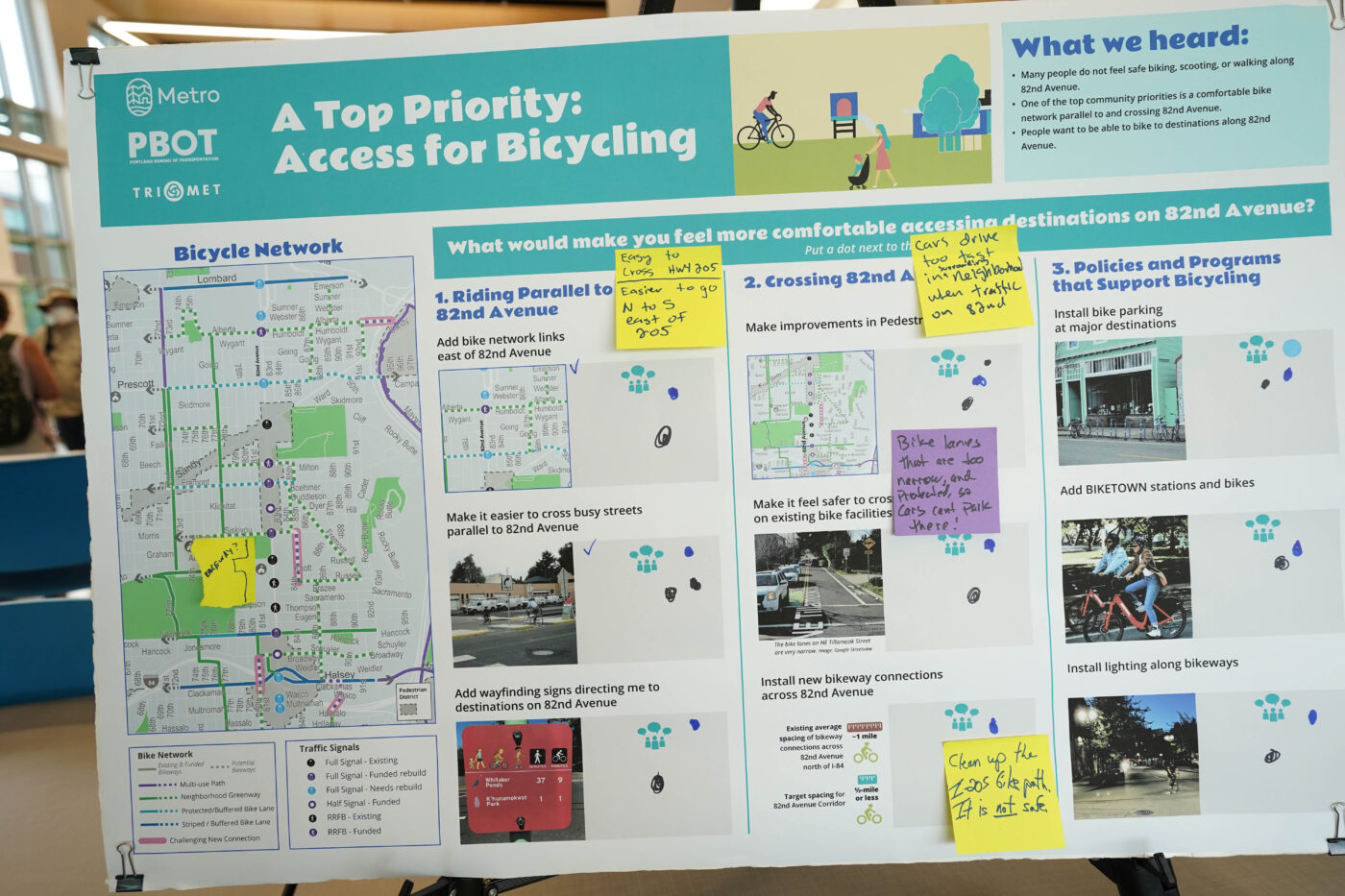

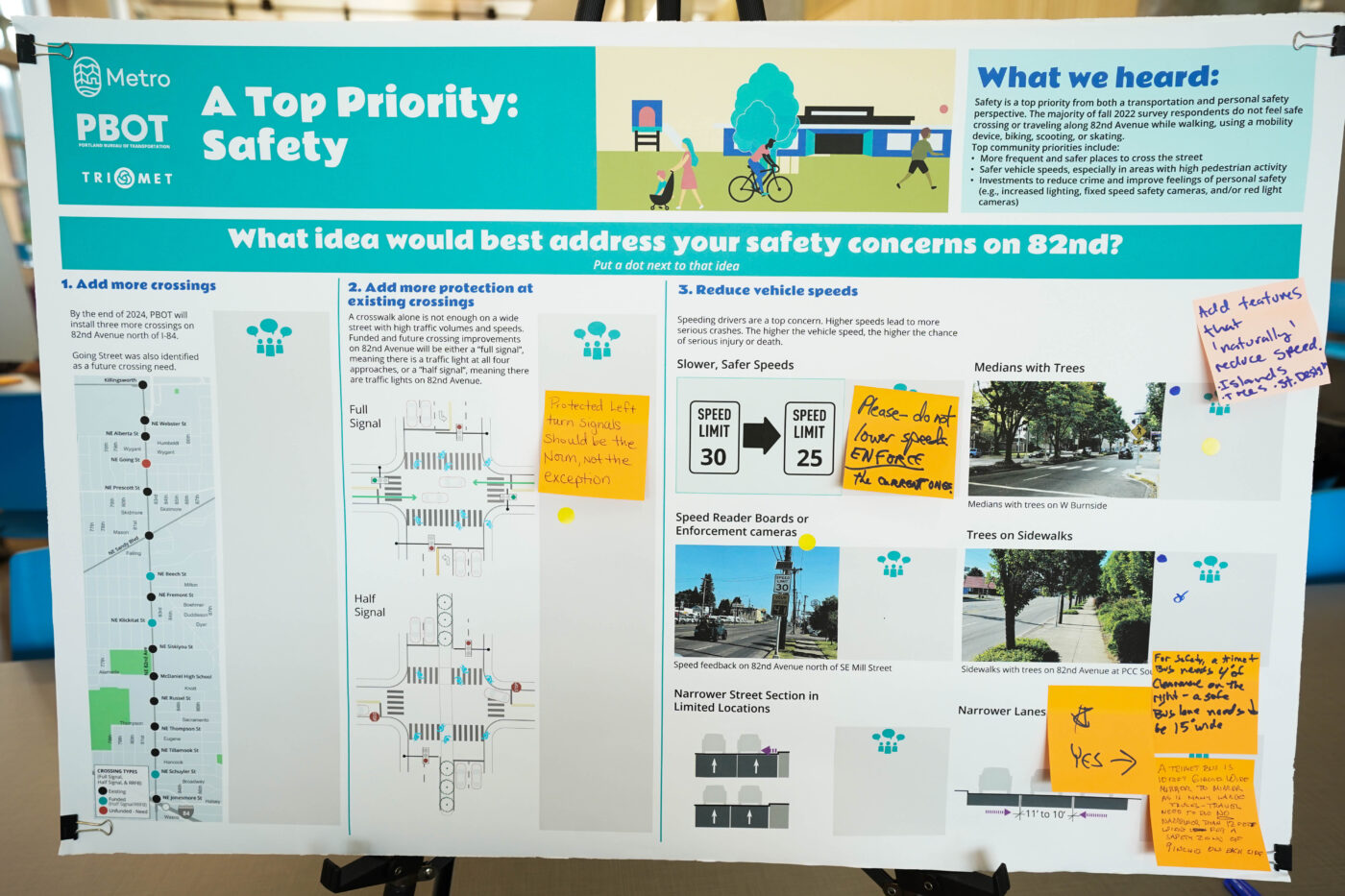
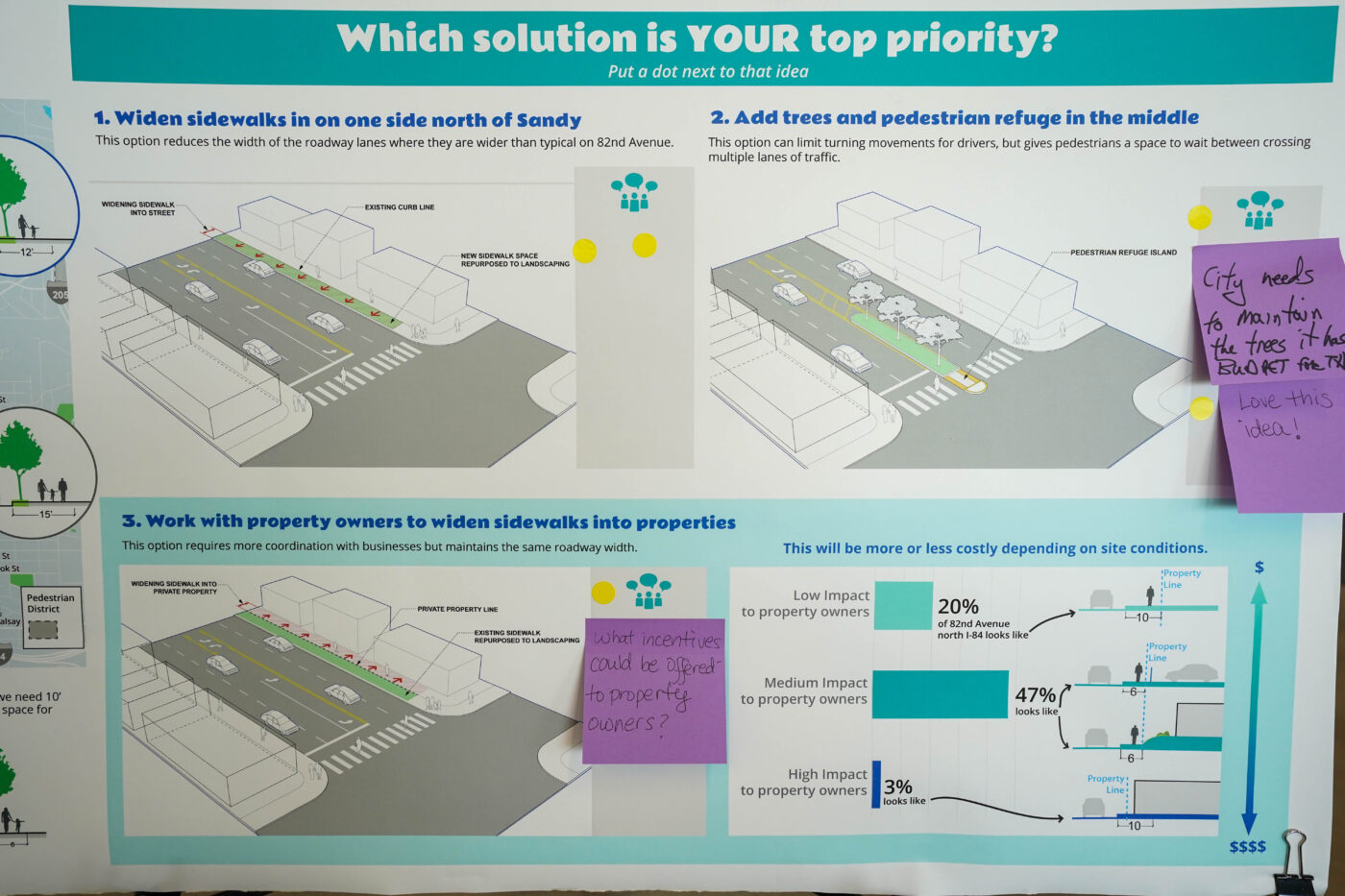
While this might sound like conceptual fluff, you’ll be happy to know that work on 82nd has already begun in earnest. PBOT has a list of critical maintenance needs and crossings they’re working on. By 2026, they say, they will have invested $101.6 million into 82nd Avenue. A lot of that money is going into repaving. PBOT expects 46% of the street between Lombard and Clackamas Town Center to have fresh, smooth pavement by the end of 2026. Also in the next three years, they promise to: complete all new street lighting needs; add 23 new or updated crossing treatments; and to replace and modernize nine traffic signals.
While they work on those immediate needs, gears are already turning around the larger discussions like lane reconfigurations, bikeways, and future transit service. The goal is that by 2030, the transformation — including new paving, full ADA compliance, new bus service, wider sidewalks, bikeways and other upgrades — will be complete.
The nature of the transit service and how bicycling and driving will figure into the project are still very much up in the air; but initial conversations that will shape these important outcomes have begun.
TriMet Project Director Michael Kiser, fresh of leading the Division Transit Project, was hanging out at the TriMet posters. Asked what type of transit we can expect on 82nd, and whether it be like the FX line on Division or something better, Kiser was coy. He didn’t want to step on any toes. “I’d like to say, ‘We did Division, now let’s go bigger’ But we don’t control the right-of-way and want to work with our partners.”
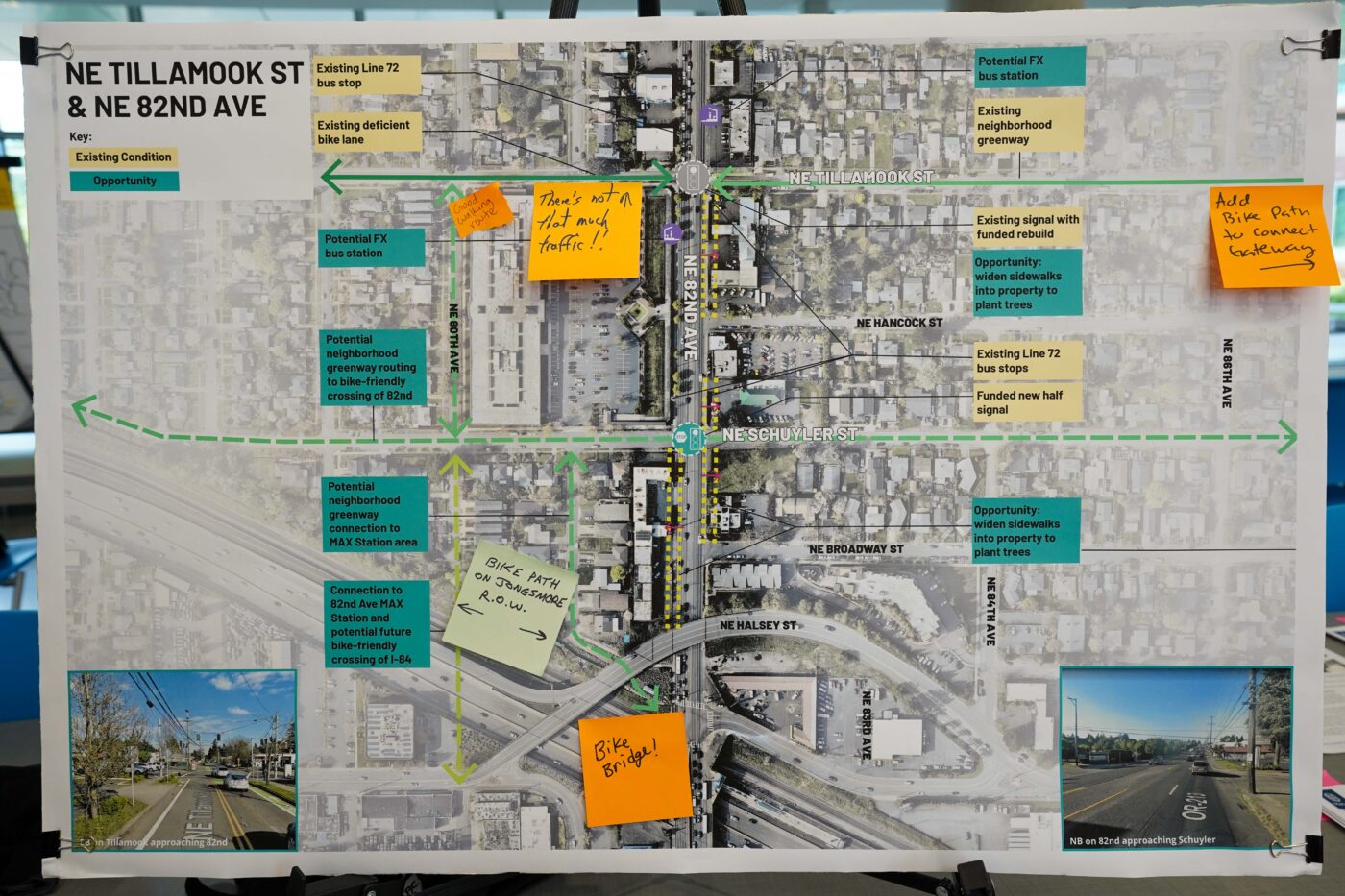
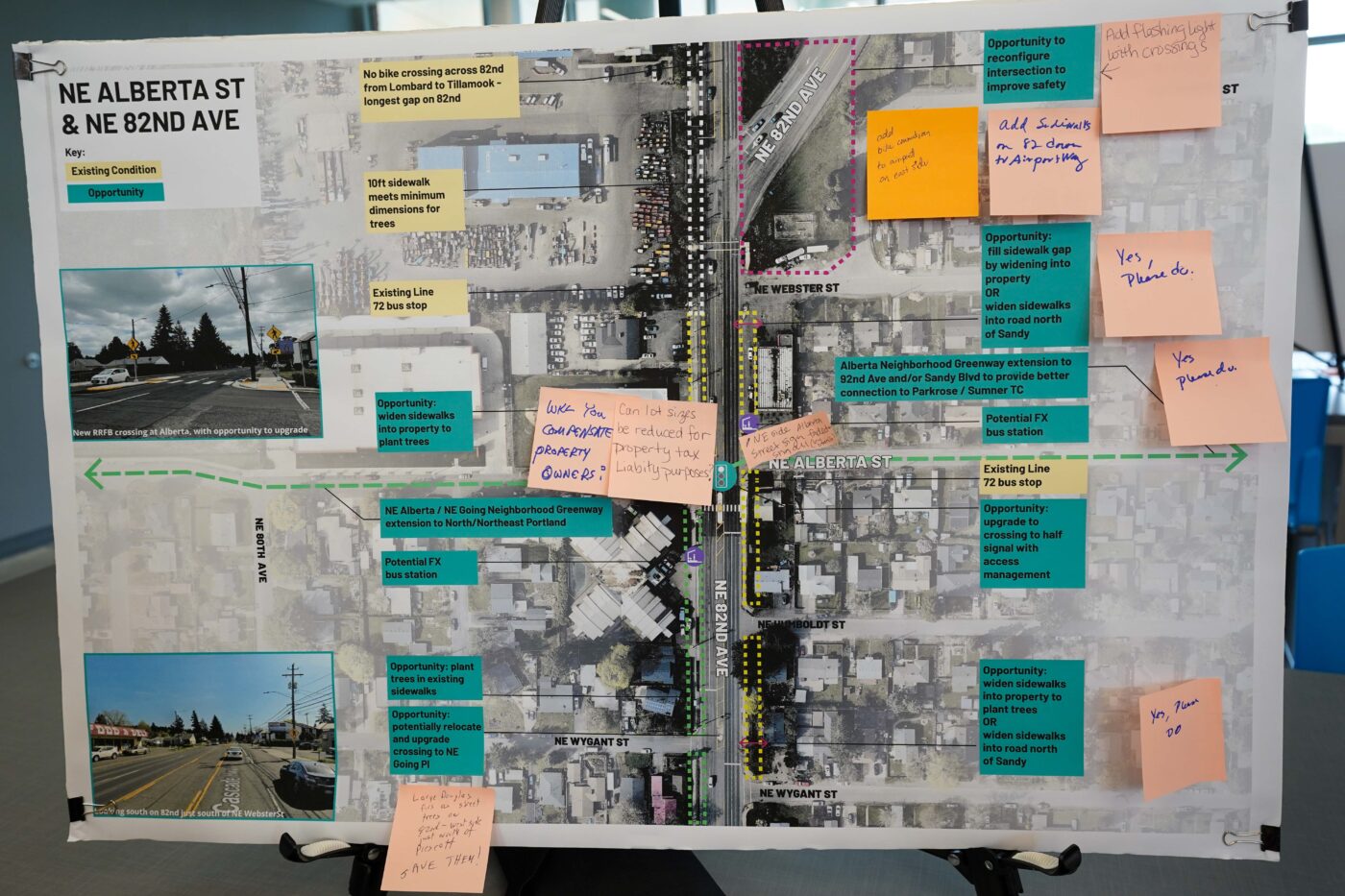
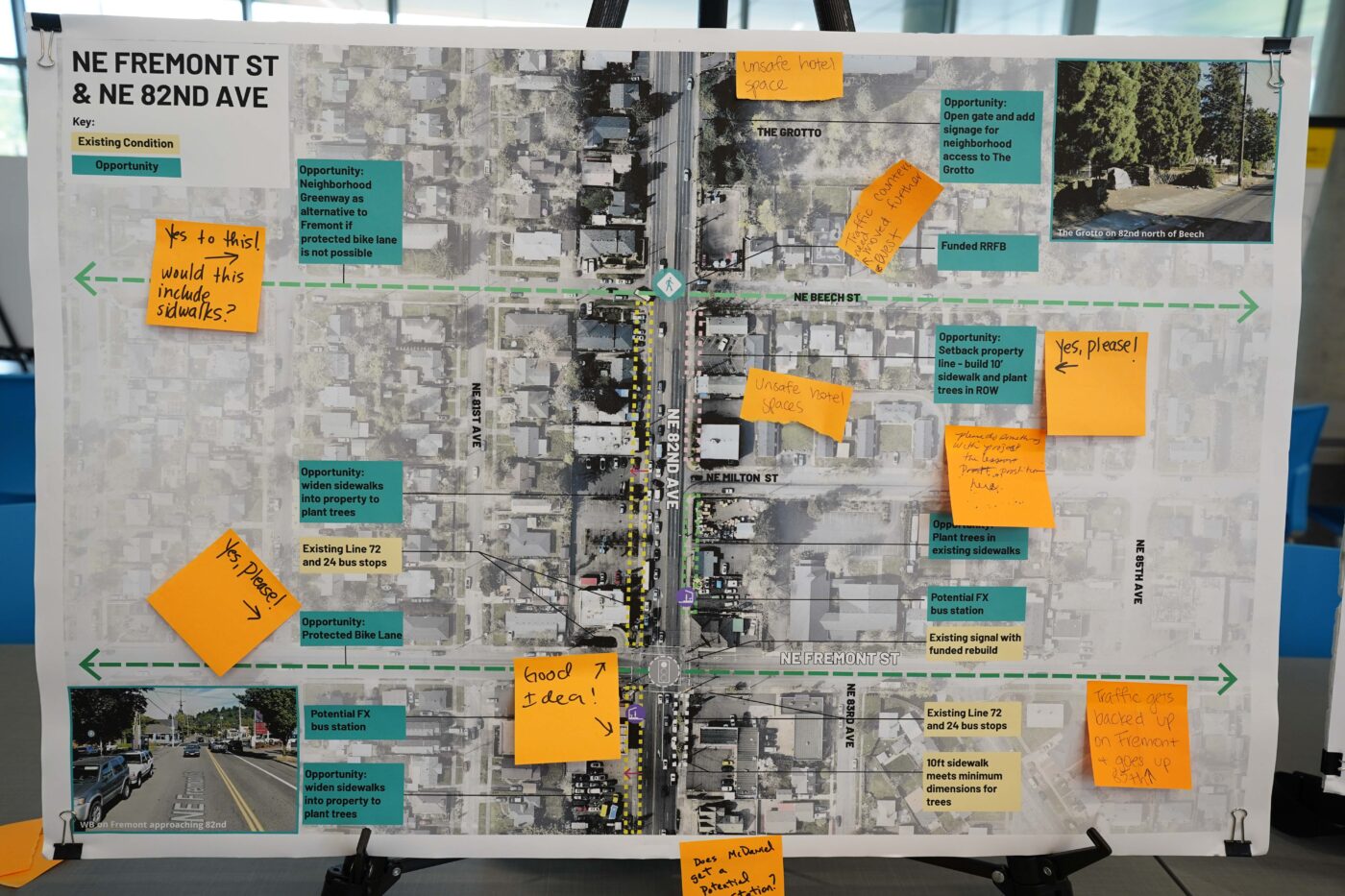

It’s assumed that bus service will get much better as part of this project. It’s also assumed that car users will have access to the street. Interestingly, the same can’t be said for bicycling access. Currently, 82nd is a classic, five-lane arterial with two standard lanes and a center turn lane. The current thinking is to use two of those lanes for buses, add a bunch of center median islands, and keep two lanes for drivers.
I haven’t heard anyone talk seriously about a dedicated bike lane on 82nd Ave at this juncture. I’ve been hearing things like, “We can’t fit everything,” and “The community still wants/needs to drive.” It will be an interesting choice — given the climate crisis and our stated goals to reduce driving — if we exclude bicycle access and maintain car access on such an important corridor.
There’s a lot of talk about improving parallel routes and east-west connections to 82nd; but not only would that not equate to easy and direct bicycle access, there will likely be no guarantee of funding to do those projects. I think we’ll need to get very creative and we should not shy away from the difficult conversations about the type of city we want to build and how driving and cycling play a role in that.
I was happy to hear from planning staff last night that at least there’s recognition of the importance of bike access beyond the chorus of folks already capitulating and saying, “let’s just make a good neighborhood greenway” somewhere nearby. On some (albeit very few) sections of 82nd it might be possible to widen the sidewalk and create a shared bike/walk facility, or even a multi-use path.
If we end up with no bikeway on 82nd (the most likely scenario given current politics), the next best thing might be to make sure the new bus lane explicitly allows bicycling. If designed properly, a shared bike/bus lane on 82nd might be a good outcome. On that note, if we do our job taming and reducing car traffic, there’s a percentage of biking Portlanders that might even feel comfortable sharing the non-bus lane with car drivers for a block or two (much like folks do now on streets like Hawthorne and Alberta).
It will be fascinating to see how this conversation evolves in the coming months and years. One thing I learned last night that will make it even more interesting is that the Oregon Department of Transportation still owns three portions of the street: the northernmost section from NE Alberta to Lombard, the bridge over I-84 and the area around the MAX station, and the SE Powell Blvd intersection.
If you want to learn more about this project, I recommend checking out one of these workshops. There are two more planned for July 20th (center district) and 29th (south district). Find out the details at PBOT’s Building a Better 82nd project website.
from "workshop" - Google News https://ift.tt/pF29ERL
via IFTTT

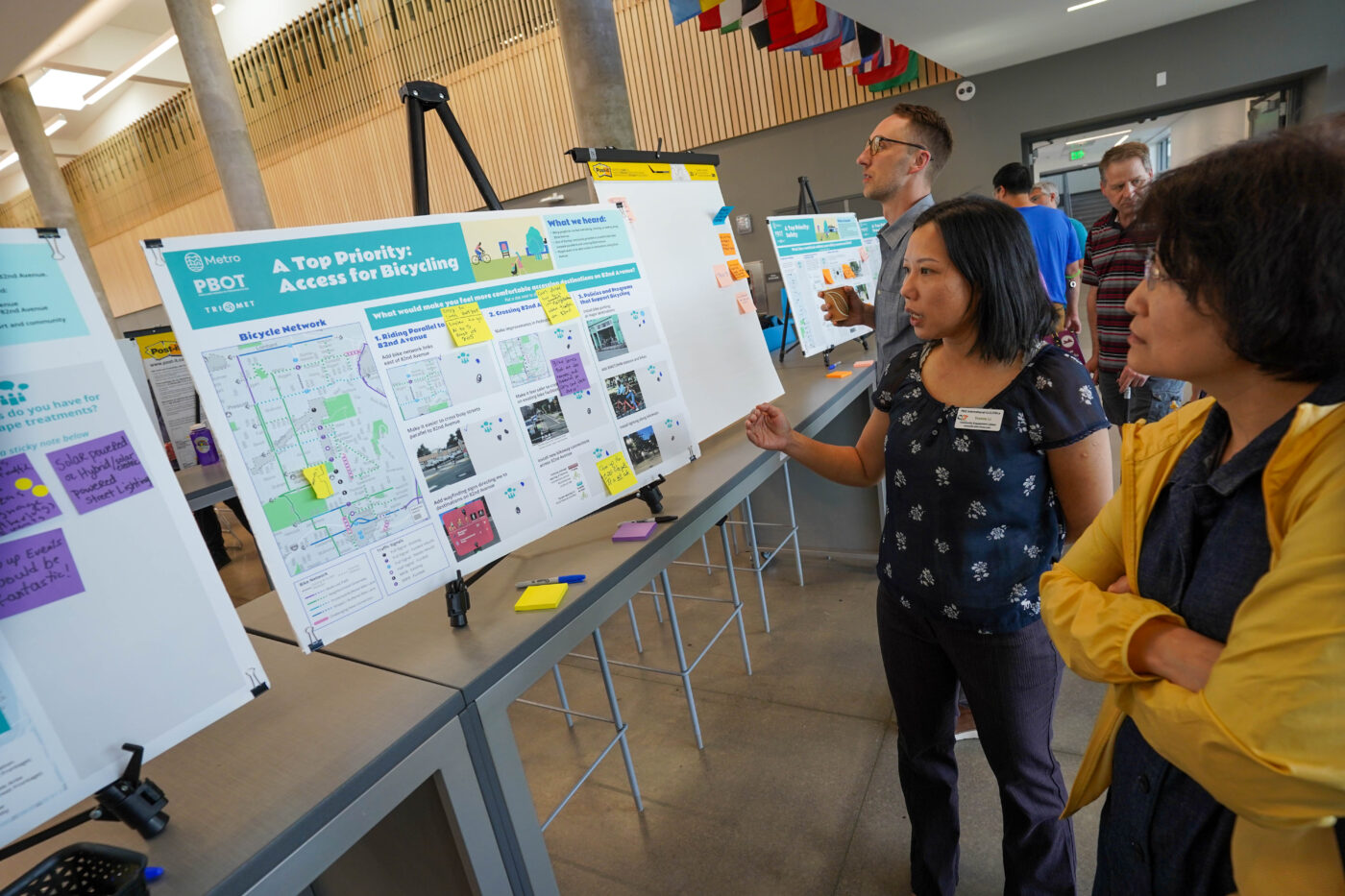

No comments:
Post a Comment